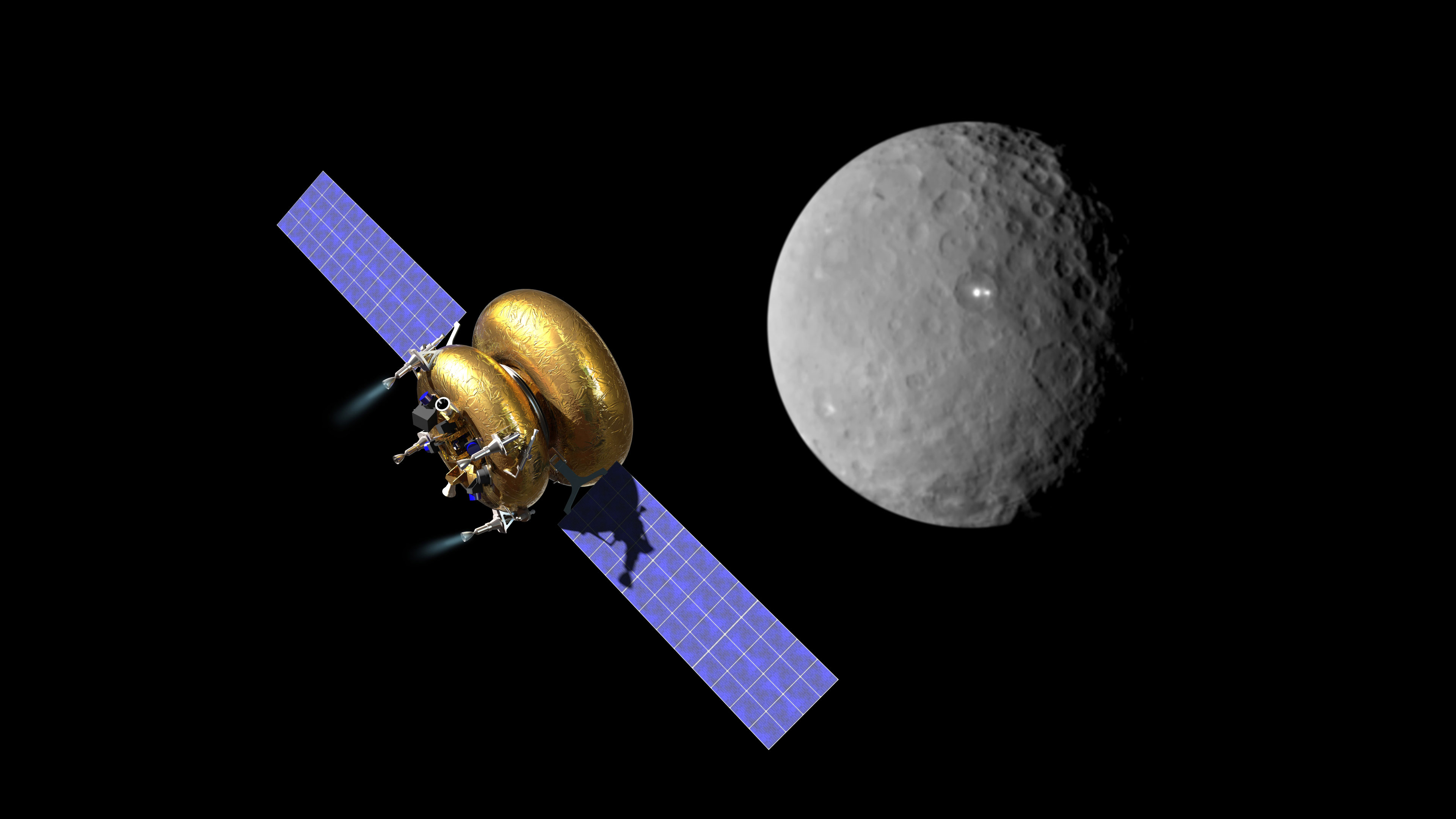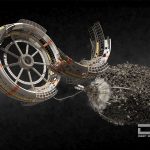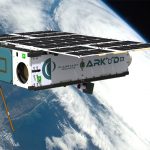
Prospecting for treasure within the solar system
The current cost of space travel, on a price per mass basis, is astronomically high. All puns aside, this is a major economic barrier that must be overcome. If we are to send humans to Mars, or anyplace really, we’re going to have to lower the cost of space travel. Companies are already looking towards cutting down launch costs, but there still exists the problem of mass. Currently we are limited only to what we can throw up there, so our ships must carry everything with them, including fuel. If we could build spacecraft up there, or process fuel in deep space, we could reduce mission cost significantly.
That’s when we look up, seemingly towards the stars, but more specifically, towards the asteroids that scatter the solar system. We’ve known about their properties for years, with meteorites containing rare metals and comets spewing water across the sky. They’re fragments of our early universe, remnants of a young system that never had a chance to harbor life. And now they’re all ours.
A closer look at these rocks shows us an astonishing amount of diversity, and even greater potential. Their compositions spread over the periodic table, and their sizes range from pebbles to miniature worlds. Mining these asteroids will be an enormous challenge, but one that humanity is willing to take on. It starts with slow steps, with minimal funding, working towards a vision of a fully functional space economy. However before we can mine these asteroids, we must look to understand them.

NASA is where must turn to get some answers. Asteroids are very difficult to study, and since most research has been limited to what lands on Earth, there are still many unanswered questions. Soon, we may finally get some answers. Launching in September of 2016, OSIRIS-REx will begin its seven year mission to a carbonaceous asteroid to study it in detail, and then send a sample return mission back to Earth for further evaluation. This is a crucial first step, but its purpose is scientific, not industrial. If we’re going to start prospecting asteroids then the private sector needs to get involved. The good news is, this already happened.
Two companies, Planetary Resources and Deep Space Industries, are embracing the possibilities at hand, and hope to be a part of what could very much be the next gold rush. Each company is in the process of designing the first generation of asteroid mining spacecraft. In the short term, both companies are focused on mining one of the most abundant resources in the solar system: Water.
Water is one the most versatile molecules in the solar system. While there is obvious need of human consumption, water will be most likely used for fuel. The basic ingredients, hydrogen and oxygen, are the basis for many launch vehicles today, including NASA’s upcoming Space Launch System. If we are able to manufacture rocket fuel in space, as both companies plan on doing, we will be able to reduce the cost of interplanetary travel. Both companies are currently moving forward with their plans to begin asteroid mining, and are aiming to begin water extraction by the early 2020’s.

Deep Space Industries, often shortened to DSi, is currently working on Prospector-X. It aims to be the first commercial asteroid mining spacecraft. This CubeSat sized craft is planned to test the basic technologies in space, before being manufactured for prospecting and scouting missions. The spacecraft is equipped with two cameras, deep space avionics powered by solar cells, as well as their Comet-1 thruster. This small thruster uses water as fuel, expelling the superheated liquid to generate thrust.
This craft, which is scheduled to launch in 2017, is a precursor to their aptly named Prospector-1. The next generation mining craft is scheduled to begin its mission by the end of the decade. This craft will be larger, weighing around 50 kg when fully fueled, and won’t be confined to the dimensions given by cubesats. The hexagonal craft will be the first commercial interplanetary mining mission. After it launches, it will rendezvous with a near earth asteroid to observe its water content, map its surface, and touch down on the asteroid. This second mission builds off Prospector-X, and will test out DSi’s technology in deep space.
Long term, Deep Space Industries hopes to prospect and mine near earth asteroids, and test in-space manufacturing technologies. Being able to process and manufacture metals is the eventual goal of Deep Space Industries, who look towards the stars with optimism. They strive to be a key piece of the mid to late 21st century.

Planetary Resources has taken a step in a slightly different direction, putting its chips into first developing technologies for Low Earth Orbit, before testing out deep space systems. Their next spacecraft, the Arkyd-6, is slated for launch later this year. This will be their second CubeSat put into orbit after Arkyd-3 was deployed from the ISS last year.
They are testing vital camera, telecommunication, propulsion, and electric systems with their earlier craft. Planetary Resources is also planning on establishing an economic presence on earth with their Arkyd-100, which is the first step to their Earth observation focused Ceres program. Using Infrared and Hyperspectral imaging, Planetary Resources will be able to monitor temperature and water content, as well as mineral refineries and crops.

This demonstration in Earth orbit will give the engineers a chance to test out various key systems. Their long term spacecraft, Arkyd-200 and Arkyd-300, are aiming to rendezvous, observe, and prospect the asteroids up close. This will allow the company to start surveying near earth asteroids for various resources, estimating their worth by observing their shape, size, and composition.
While a competition could be brewing between first two asteroid mining companies, a surprising force is driving the initial investment: Luxembourg. The small European country has been in a partnership with both companies and has pledged almost $230 million towards space mining companies. Currently, Luxembourg is working on a legal framework to incentivize more countries, and hopes to be the European powerhouse of space mining.
There are many challenges that we need to overcome, both technical and legal. But one by one, those walls will be torn down, humans have faced and overcome greater challenges before. The engineers of today are helping to build the infrastructure for the engineers of tomorrow, giving rise to new possibilities that today are still unimaginable. The ground work laid today by the space mining companies will help fuel a whole new economy in space, and could open the doors the rest of the solar system.
Interested in more? Check out our more in-depth article on NASA’s asteroid mission that is launching soon. Start planning your own asteroid mission at Asterank.com, compare the worth of asteroids and start inventing your own ideas. Look further into these near future technologies with Deep Space Industries and Planetary Resources, and explore the first generation of space mining missions online.
References and for further reading
- www.asterank.com/
- www.visualcapitalist.com/forecast-when-well-run-out-of-each-metal/
- www.planetaryresources.com/
- www.asteroidmission.org/
- www.deepspaceindustries.com/
- www.planetaryresources.com/2015/07/planetary-resources-first-spacecraft-deployed/
- www.Spaceresources.public.lu/
- https://space.nss.org/settlement/nasa/spaceresvol4/spacelaw.html
- www.fortune.com/2016/06/05/luxembourg-asteroid-mining/










